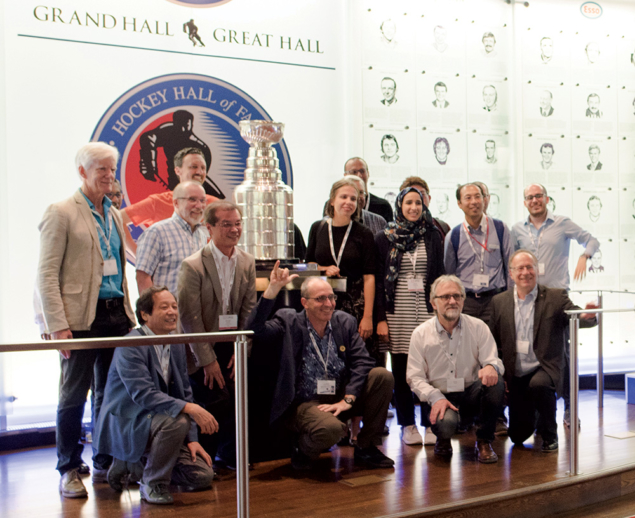
The 29th International Symposium on Lepton–Photon Interactions at High Energies was held in Canada from 5–10 August at the Westin Harbour Castle hotel, right on the Lake Ontario waterfront in downtown Toronto. Almost 300 delegates provided a snapshot of the entire field of particle physics and, for the first time, parallel sessions were convened from abstracts submitted by collaborations and individuals.
The symposium opened with a welcome from Chief Laforme of the Mississauga First Nation. It was followed by highlights from the LHC experiments and updates on plans for the CERN accelerator complex, the CEPC project in China and the recently inaugurated Belle II programme in Japan. The Belle-II collaboration showed early results from their first 6.5 fb–1 of SuperKEKb data, including measurements of previously studied Standard Model (SM) phenomena and a new limit on dark-photon production near 10 GeV. Further plenary sessions covered dark-matter searches, multi-messenger astronomy, Higgs, electroweak and top-quark physics, heavy-ion physics, QCD, exotic-particle searches, flavour physics and neutrino physics.
Tatsuya Nakada offered his views on flavour factories
The symposium ended with a progress report on the European strategy for particle physics and summaries on advances in particle detection and instrumentation, followed by a presentation on outreach and education initiatives from Kétévi Assamagan (Witwatersrand and BNL), and perspectives on future facilities. In the discussion on future flavour facilities, Tatsuya Nakada (EPFL) offered his views on flavour factories, emphasising their important role in guiding future experiments. He stressed the fact that yesterday’s discoveries (most recently the Higgs boson) become today’s workhorses, providing stringent tests of the SM. In the coming decades we are likely to have W and Higgs factories that will further illuminate the remaining shadows in the SM.
A packed public lecture by 2015 Nobel-Prize winner Art McDonald demonstrated the keen interest of the broader public in the continued developments in particle physics, including those in Canada at the SNOLAB underground laboratory, which now hosts several experiments engaged in neutrino physics and dark-matter searches, following the seminal results from the SNO experiment.








